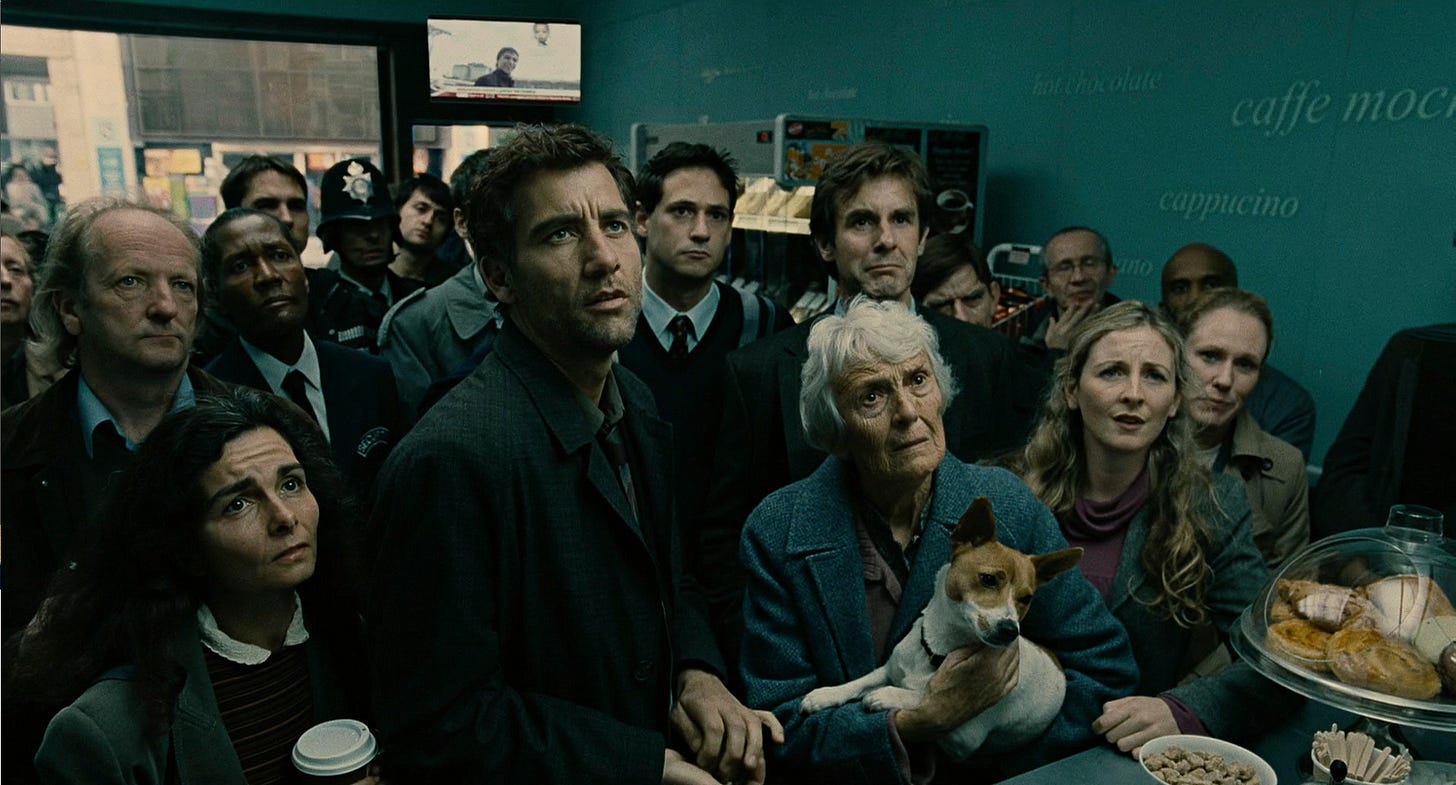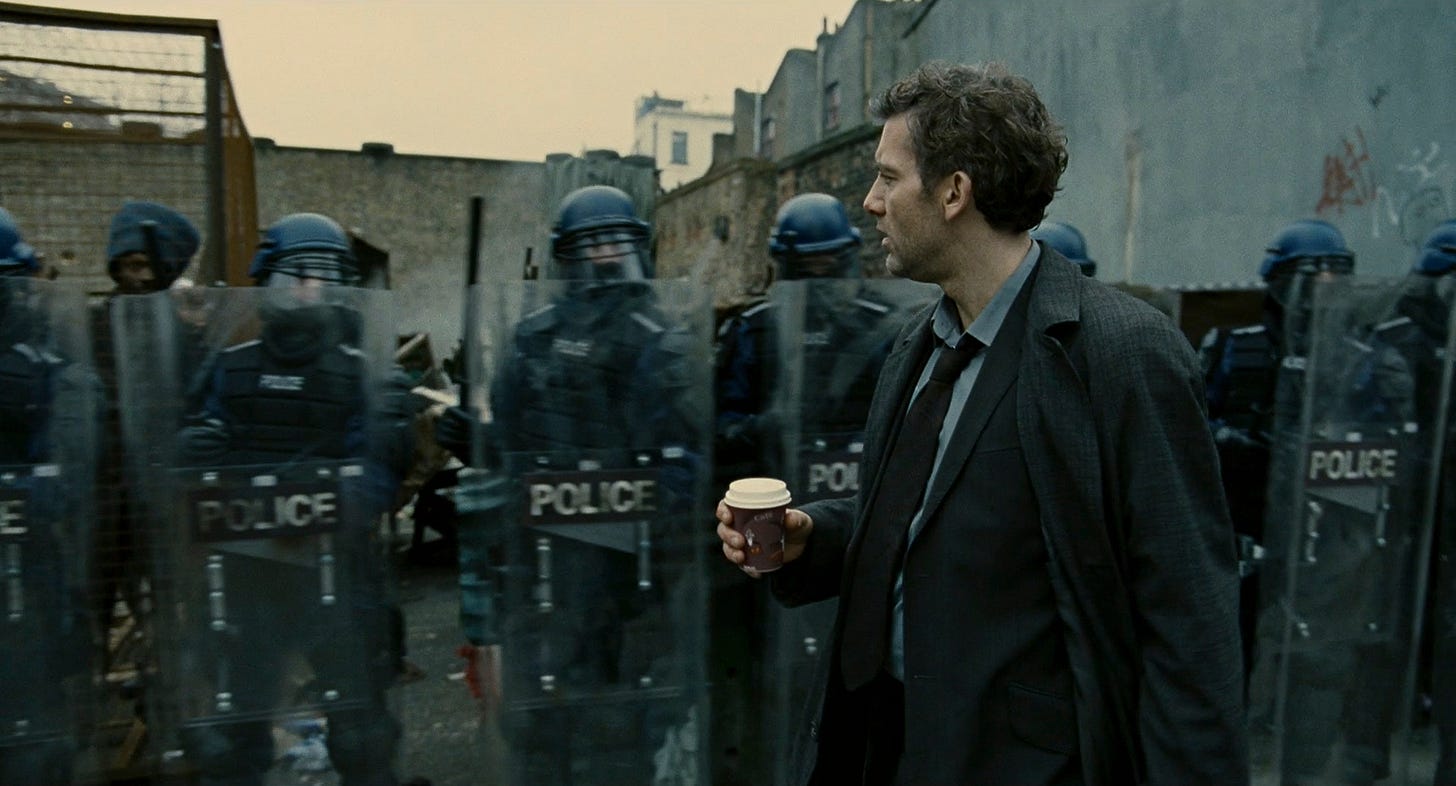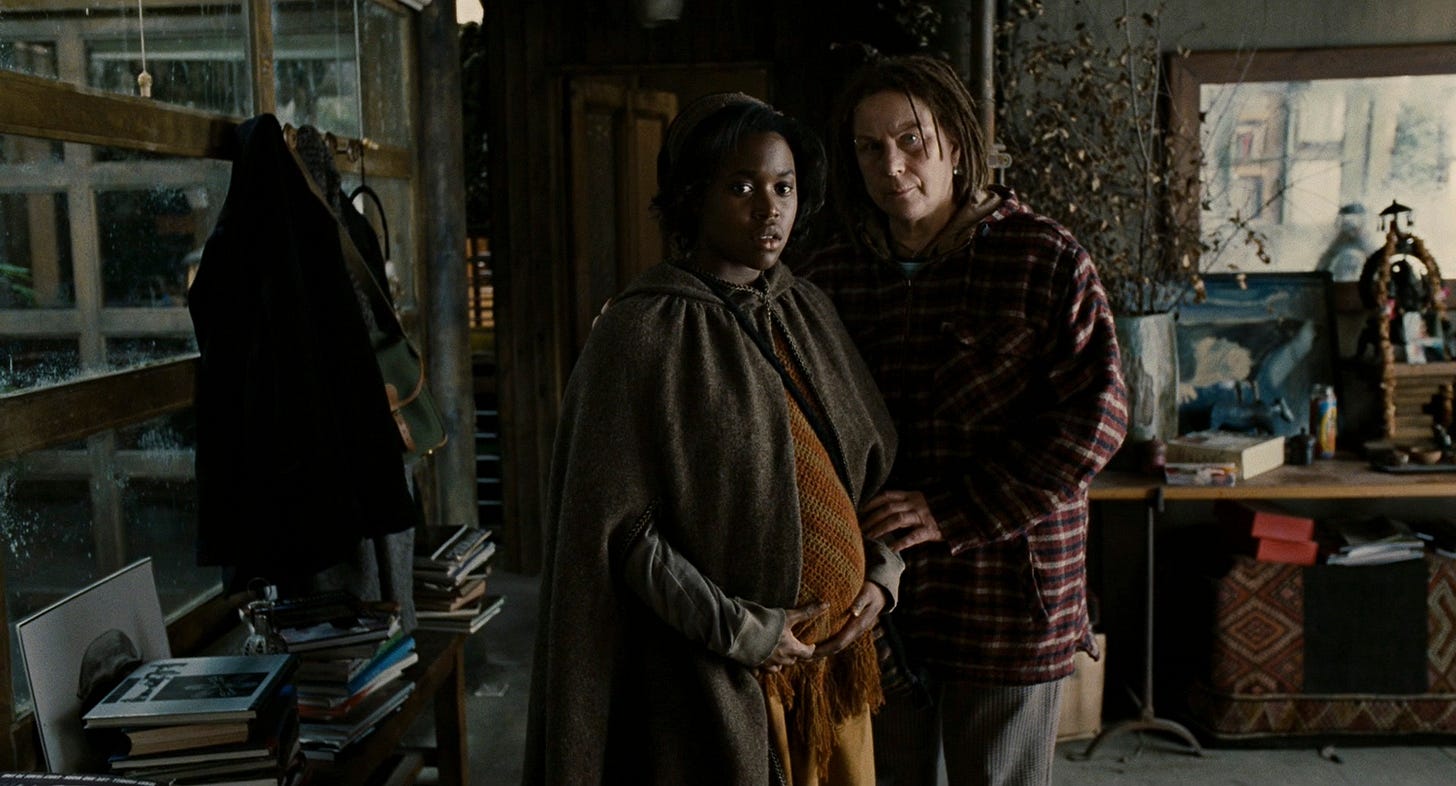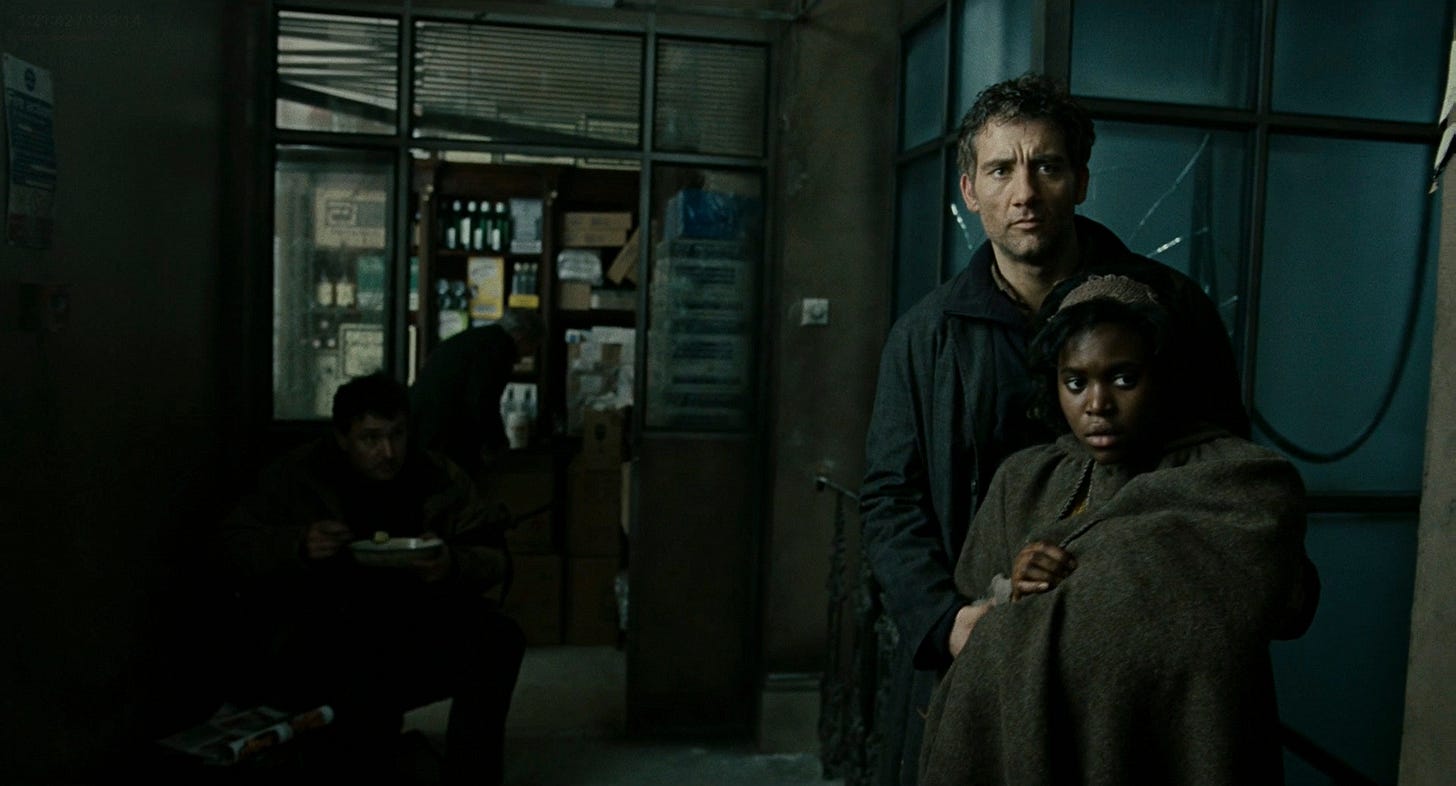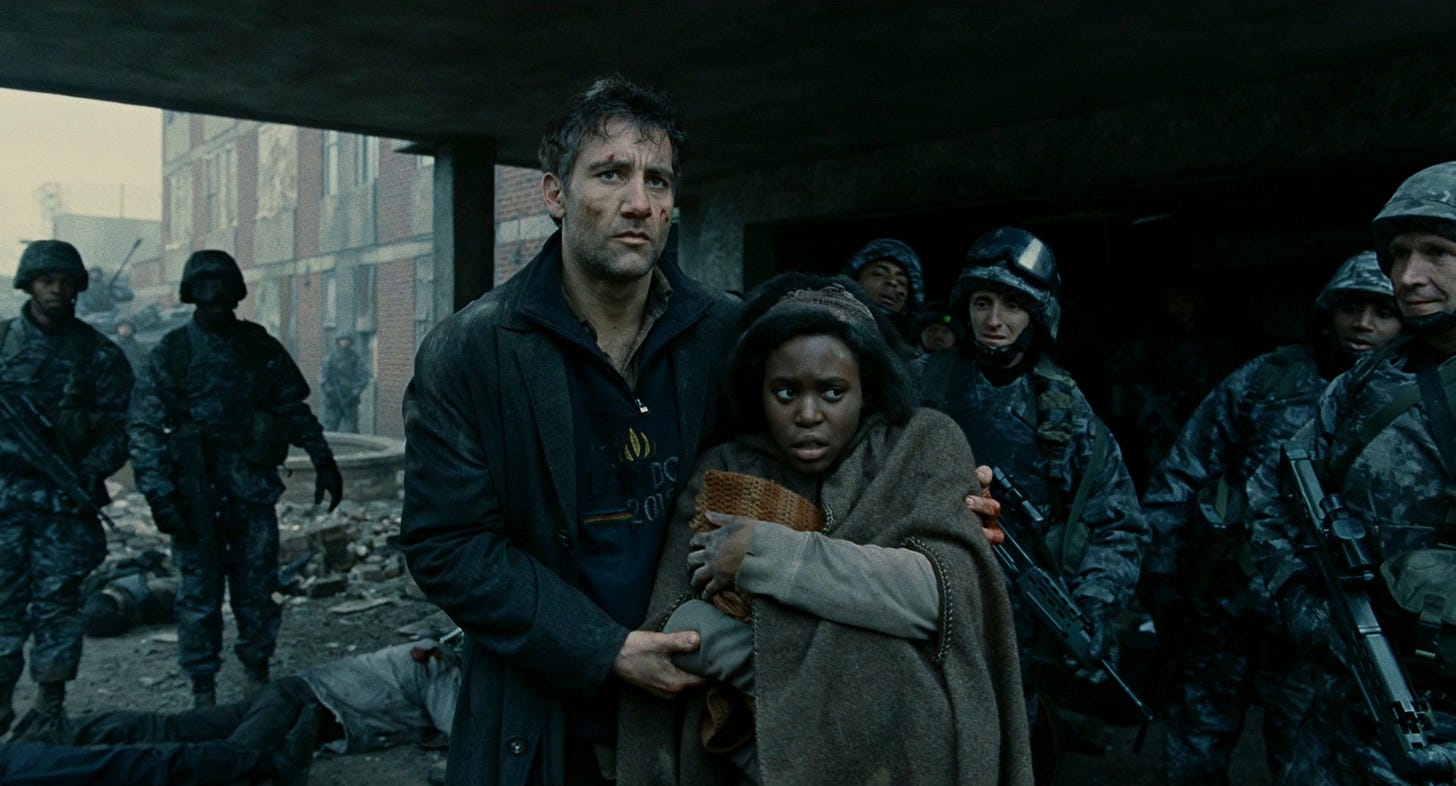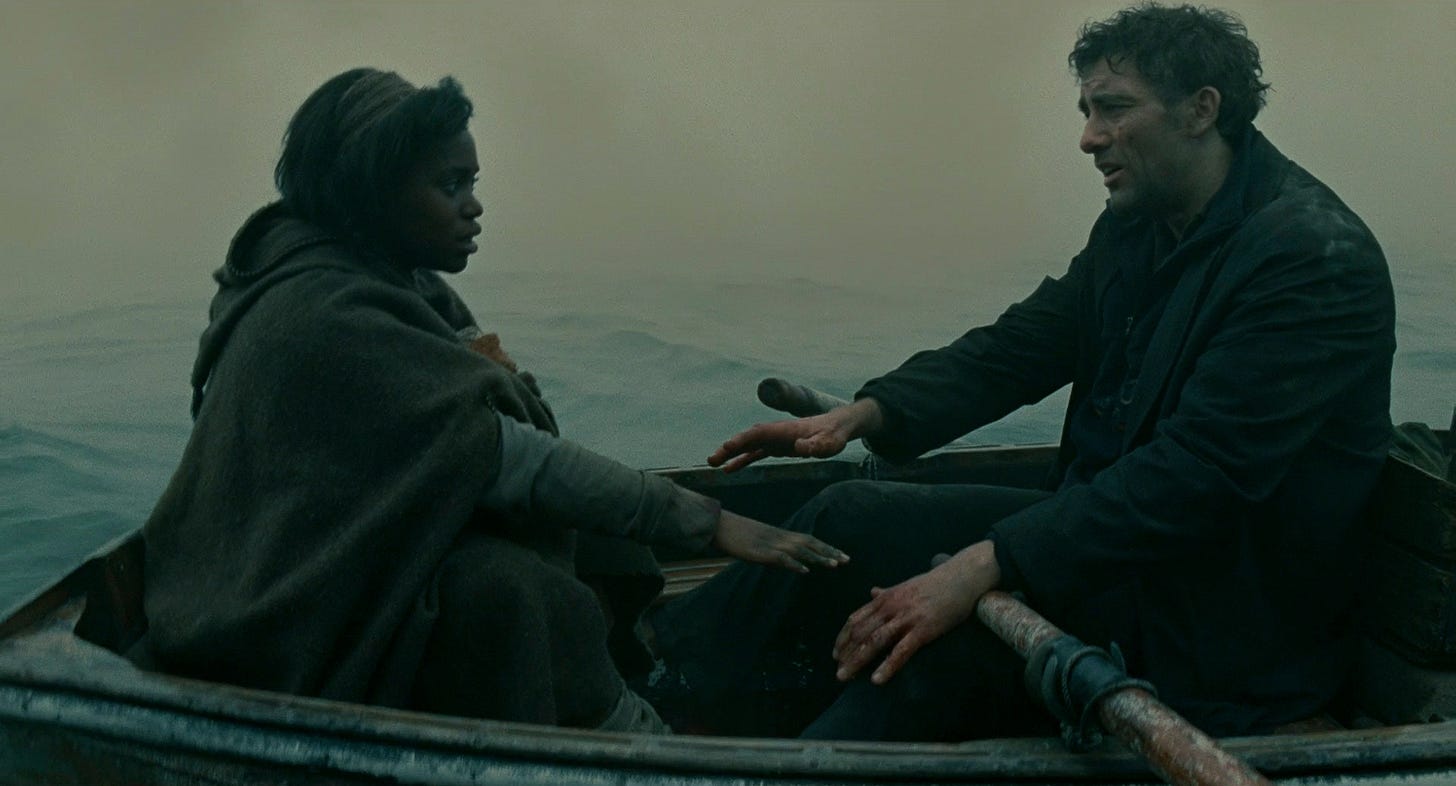Children of Men Structure Breakdown
The Intro
Adapted from the novel by P.D. James, Children of Men is in my view one of the top five science-fiction films ever made, and probably the best science-fiction film of the 21st century. And I’m not alone in thinking so! It’s structure is relatively straight-forward with a typical three-act structure. However, it tackles the Act 2 Challenge in a fairly unique way.
As always, these breakdowns contain SPOILERS, and are only recommended if you've already seen the movie. You can check my introduction to these breakdowns, to get an overview of my process and philosophy.
Feel free to let me know what you think in the comments below!
The Basics
Director: Alfonso Cuaron
Writers: Alfonso Cauron & Timothy Sexton, David Arata, Mark Fergus & Hawk Ostby, novel by PD James
Release Date: 2006
Runtime: 109 Minutes
IMDB: https://www.imdb.com/title/tt0206634/reference/
Movie Level Goals
Protagonist: Theo Faron
External: Get Kee to Safety
SUCCESS | FAILURE | MIXED
Internal Goal: Care about the world again
SUCCESS | FAILURE | MIXED
Success of the Internal Goal Leads to External Goal
Three Observations
Observation #1: Middle Act Sequences
Writers familiar with the original approach to three-act structure, as proposed by writers like Syd Field, know that one of the great challenges of writing in that structure is the Act 2 wasteland. If Acts 1 and 3 are roughly 30-minutes long each, and Act 2 is simply everything in middle, writers can often find themselves with a long (often 60-minutes or more) act that’s hard to keep structured and focused. Children of Men handles this with two approaches. The first is that Act 2 is roughly 45 minutes long. At that length, it’s not overly long in the first place, making it a little easier to work with. Secondly, while the movie is not overall based around sequences, Act 2’s 45-minutes divides into three roughly 15-minute sequences. The use of sequence level goals and shorter, 15-minute units, combine to help give Act 2 a little more structure and direction. Act 2 Sequence 1 focuses on Theo figuring out what’s going on and who to trust and includes the major revelation that Kee is pregnant. Later Theo overhears the Fishes conspiring and the sequence climaxes with Theo, Kee, and Miriam escaping. In a somewhat slow Act 2 Sequence 2, the three take refuge with Jasper and are able to rest, relax, and try to figure out a new plan for getting Kee to the pick-up point. They are discovered, and the sequence climaxes with the death of Jasper, and the group’s escape. Finally, the group meets up with Syd in Act 2 Sequence 3 and he smuggles them into the camp. Separated from Miriam, they find a room to hide in and the sequence goal (getting into the camp safely) and the overall act goal (protecting Kee) are successful, as Kee gives birth to her baby.
Observation #2: The Gladiator Ending
One of the best ways to create a tragic, yet uplifting ending, is to kill the main character at the end of the movie. Certainly tragic, but how to make it uplifting? Simple: make sure the protagonist, despite death, still succeeds in achieving their movie level goal(s). A great example is Maximus in Gladiator, who despite dying at the end of the movie, succeeds in his external goal of restoring the Senate to Rome and defeating Commodus. He also succeeds at his internal goal of being reunited with his family. In Children of Men, as he dies, Theo succeeds in his external goal of getting Kee and her child to safety (something he presumably failed to do with his own child) and succeeds at his internal goal of caring and engaging with the world once more. In this way, we have the bittersweet ending of the protagonist dying, but knowing he has found himself and died accomplishing something of importance.
Observation #3: Motivation versus Internal Goal
One thing many writers (including myself) wrestle with is the difference between an internal goal and motivation. Often times they feel like the same thing. In my experience, internal goals can drive a scene on their own, separate from the external goal. Motivation, on the other hand, is generally the flip side of the coin of either the external or internal goal. This means that any scene dealing with motivation is always already dealing with either the external or internal goal. In Children of Men, as Theo begins to care more and more about things, he becomes more driven to protect and help Kee. Yet despite this link between the internal and external, there are plenty of individual scenes that focus on the internal goal (caring about the world) without any specific link to the external goal. Early scenes of Theo not caring about his job or the world, getting high, talking to Julian, etc. all focus on his lack of engagement with the world, but not with his external goal linked to Kee.
However, Theo’s motivation is to overcome the grief of the loss of his child that caused him to disengage and stop caring. We partly know this is his motivation (versus internal goal) because there are only a couple of scenes in the entire movie that even hint at Theo’s loss. But additionally, every scene about the loss of his child is also always about his loss of motivation (internal goal). There are no scenes about motivation that aren’t also about the internal goal. They are inextricably linked, so that motivation always raises the internal goal. However, the movie can deal with the internal goal (caring about the world) without necessarily referencing the loss of his child (his lack of interest in his job for example).



